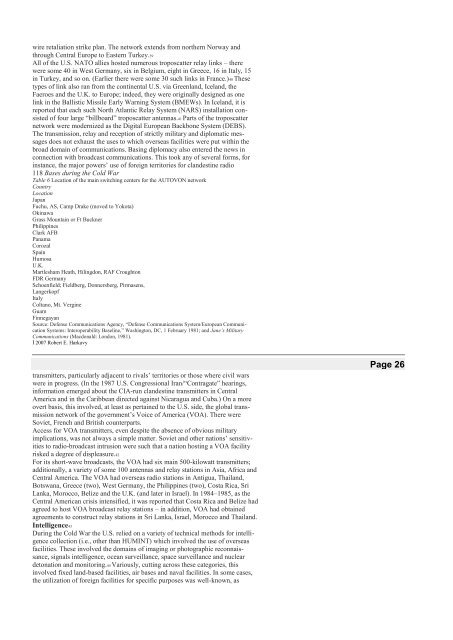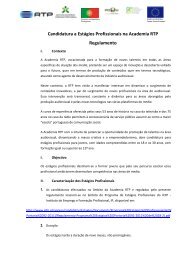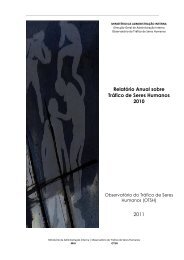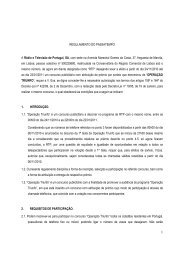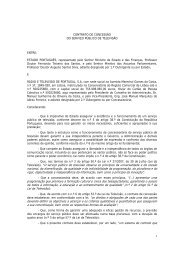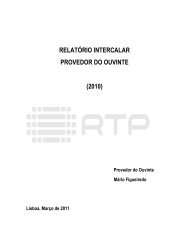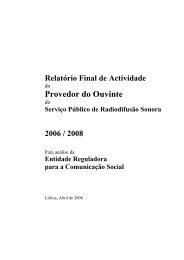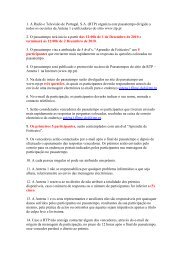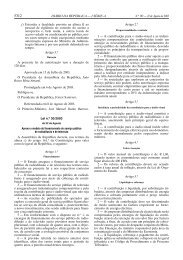6 Bases during the Cold War
6 Bases during the Cold War
6 Bases during the Cold War
You also want an ePaper? Increase the reach of your titles
YUMPU automatically turns print PDFs into web optimized ePapers that Google loves.
wire retaliation strike plan. The network extends from nor<strong>the</strong>rn Norway andthrough Central Europe to Eastern Turkey.39All of <strong>the</strong> U.S. NATO allies hosted numerous troposcatter relay links – <strong>the</strong>rewere some 40 in West Germany, six in Belgium, eight in Greece, 16 in Italy, 15in Turkey, and so on. (Earlier <strong>the</strong>re were some 30 such links in France.)40 Thesetypes of link also ran from <strong>the</strong> continental U.S. via Greenland, Iceland, <strong>the</strong>Faeroes and <strong>the</strong> U.K. to Europe; indeed, <strong>the</strong>y were originally designed as onelink in <strong>the</strong> Ballistic Missile Early <strong>War</strong>ning System (BMEWs). In Iceland, it isreported that each such North Atlantic Relay System (NARS) installation consistedof four large “billboard” troposcatter antennas.41 Parts of <strong>the</strong> troposcatternetwork were modernized as <strong>the</strong> Digital European Backbone System (DEBS).The transmission, relay and reception of strictly military and diplomatic messagesdoes not exhaust <strong>the</strong> uses to which overseas facilities were put within <strong>the</strong>broad domain of communications. Basing diplomacy also entered <strong>the</strong> news inconnection with broadcast communications. This took any of several forms, forinstance, <strong>the</strong> major powers’ use of foreign territories for clandestine radio118 <strong>Bases</strong> <strong>during</strong> <strong>the</strong> <strong>Cold</strong> <strong>War</strong>Table 6 Location of <strong>the</strong> main switching centers for <strong>the</strong> AUTOVON networkCountryLocationJapanFuchu, AS, Camp Drake (moved to Yokota)OkinawaGrass Mountain or Ft BucknerPhilippinesClark AFBPanamaCorozalSpainHumosaU.K.Martlesham Heath, Hilingdon, RAF CroughtonFDR GermanySchoenfield; Fieldberg, Donnersberg, Pirmasens,LangerkopfItalyColtano, Mt. VergineGuamFinnegayanSource: Defense Communications Agency, “Defense Communications System/European CommunicationSystems: Interoperability Baseline,” Washington, DC, 1 February 1981; and Jane’s MilitaryCommunications (Macdonald: London, 1981).İ 2007 Robert E. Harkavytransmitters, particularly adjacent to rivals’ territories or those where civil warswere in progress. (In <strong>the</strong> 1987 U.S. Congressional Iran/“Contragate” hearings,information emerged about <strong>the</strong> CIA-run clandestine transmitters in CentralAmerica and in <strong>the</strong> Caribbean directed against Nicaragua and Cuba.) On a moreovert basis, this involved, at least as pertained to <strong>the</strong> U.S. side, <strong>the</strong> global transmissionnetwork of <strong>the</strong> government’s Voice of America (VOA). There wereSoviet, French and British counterparts.Access for VOA transmitters, even despite <strong>the</strong> absence of obvious militaryimplications, was not always a simple matter. Soviet and o<strong>the</strong>r nations’ sensitivitiesto radio-broadcast intrusion were such that a nation hosting a VOA facilityrisked a degree of displeasure.42For its short-wave broadcasts, <strong>the</strong> VOA had six main 500-kilowatt transmitters;additionally, a variety of some 100 antennas and relay stations in Asia, Africa andCentral America. The VOA had overseas radio stations in Antigua, Thailand,Botswana, Greece (two), West Germany, <strong>the</strong> Philippines (two), Costa Rica, SriLanka, Morocco, Belize and <strong>the</strong> U.K. (and later in Israel). In 1984–1985, as <strong>the</strong>Central American crisis intensified, it was reported that Costa Rica and Belize hadagreed to host VOA broadcast relay stations – in addition, VOA had obtainedagreements to construct relay stations in Sri Lanka, Israel, Morocco and Thailand.Intelligence43During <strong>the</strong> <strong>Cold</strong> <strong>War</strong> <strong>the</strong> U.S. relied on a variety of technical methods for intelligencecollection (i.e., o<strong>the</strong>r than HUMINT) which involved <strong>the</strong> use of overseasfacilities. These involved <strong>the</strong> domains of imaging or photographic reconnaissance,signals intelligence, ocean surveillance, space surveillance and nucleardetonation and monitoring.44 Variously, cutting across <strong>the</strong>se categories, thisinvolved fixed land-based facilities, air bases and naval facilities. In some cases,<strong>the</strong> utilization of foreign facilities for specific purposes was well-known, asPage 26


